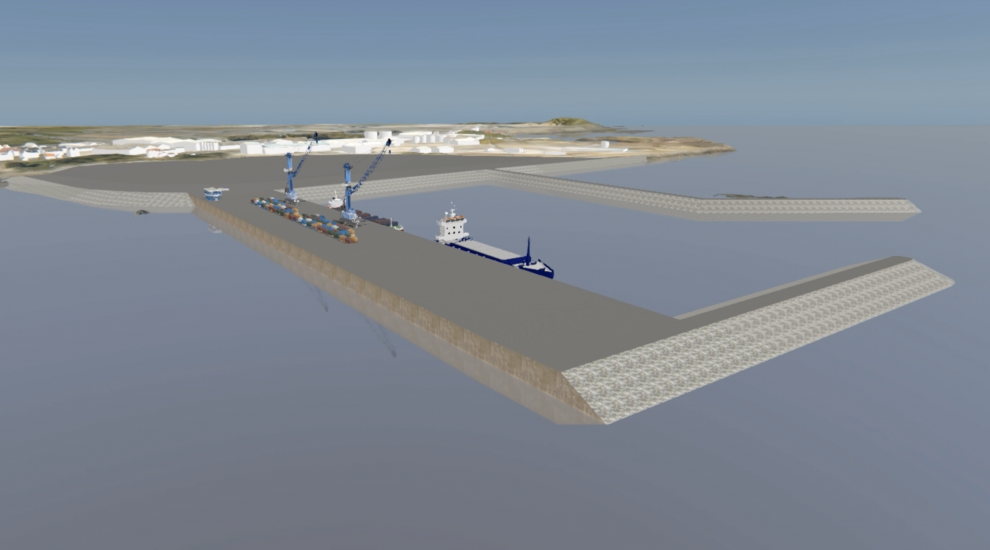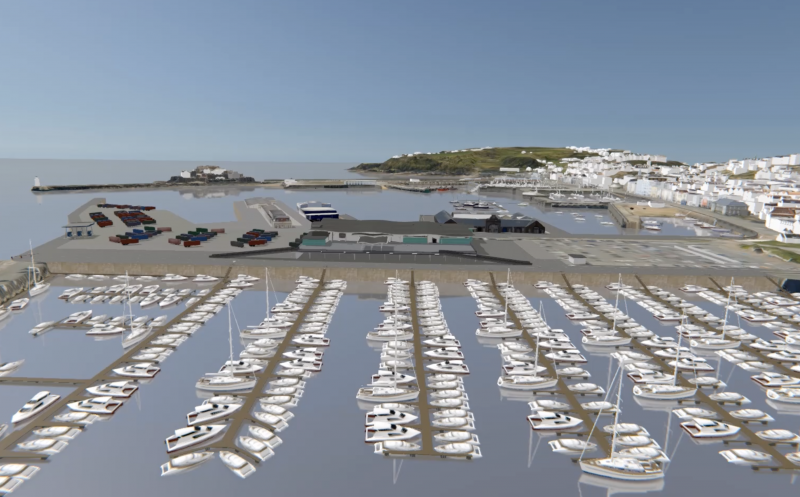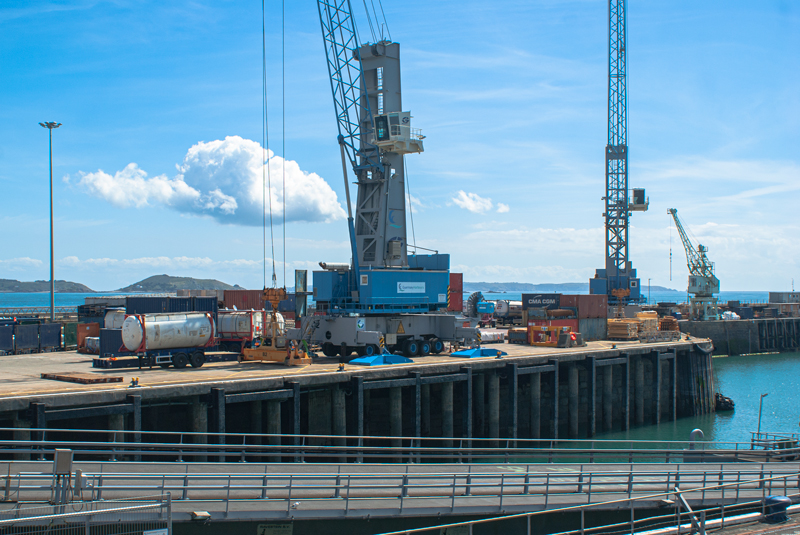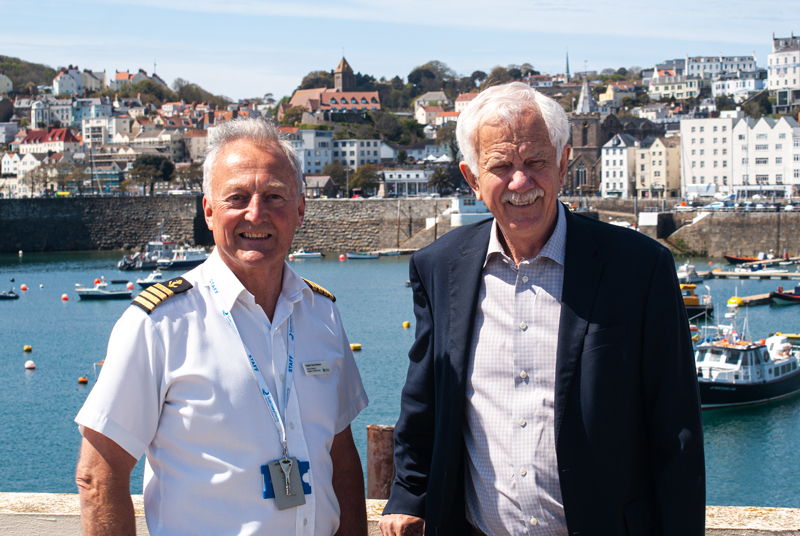


A completely new harbour will be created if the States backs ambitious £360m plans to move all freight and fuel imports to Longue Hougue South, build a new passenger terminal on North Beach and create multi-level underground parking in Town.
That is the vision put forward by the States Trading Supervisory Board, following an exhaustive two-year review of the current harbour facilities, future demand and the many "serious and pressing issues" that will see St Peter Port Harbour "fall into the sea" unless significant work is undertaken.
It has created a perfect storm of opportunity for a bold re-think of Guernsey's harbours, which the architects of the plans want to make the most of. Non-political stakeholders fine-tuned the plans, which the STSB have submitted to the States for debate. These are:
To construct a new harbour at Longue Hougue South which would take all bulk freight, liquid and lift-on, lift-off freight operations, allowing land at St Sampson's and St Peter Port Harbour's to be freed up;
To build a new passenger terminal - also hosting the Guernsey Border Agency - on North Beach, with a multi-level underground car park at the Weighbridge Roundabout end;
To reconfigure port operations around the North Beach and White Rock in order to reduce conflict on land between commercial and domestic traffic, as well as between pedestrians and vehicles;
To turn St Sampson’s Harbour into an extended marina for leisure craft, with land currently occupied by freight operations also freed for future development.
Watch: A fly-through of the £350m harbour re-development plans.
It follows a requête, debated by the States in 2019, which proposed an extension to St Peter Port Harbour, East of the QEII Marina.
Instead of extending St Peter Port or St Sampson's Harbours, STSB member and Guernsey Ports Chairman Stuart Falla MBE described the creation of a third harbour as "a keystone to unlock these areas".
Under the proposals, all commercial port activity will be moved away from St Sampson’s Harbour to a new facility south of the Longue Hougue land reclamation site.
"The really big opportunity would be St Sampson’s," said Mr Falla. "In the Guernsey context, St Sampson’s is the real prize by making the Bridge a centre of activity."
With areas along Southside and Northside freed up for development, STSB President Peter Roffey said the States must grasp the nettle in seizing this "once-in-a-generation opportunity".
"It would be extraordinary if this goes ahead," he said.

Pictured: The STSB is proposing the creation of a new passenger terminal on North Beach. An underground car park at the Weighbridge Roundabout end would replace lost spaces, and could potentially relocate parking away from other parts of Town.
Asked about the significant capital outlay in the current financial climate, he answered: "This will be large-scale spending, but it will increase what Guernsey had to offer and will release large areas of viable land. More generally it will enable and enhance economic activity in the future."
Unlike St Sampson's Harbour, which dries out and can only be entered and disembarked from in small tidal windows, Harbourmaster Captain David Barker said a purpose-built facility at Longue Hougue South "would be accessible in all states of tide".
This would involve building of an outer breakwater, to enclose an area that could be infilled using inert waste.
Captain Barker said there is no such thing as a 'do nothing' option in St Peter Port, as it would cost at least £35m "just to stop the harbour falling into the sea" over the next ten years.
There are also creating increasing conflicts at land and on sea for commercial vessels, yachtsmen, cruise and commercial passengers, freight ships, pedestrians and those working in the area.

Pictured: A shortlist of seven different options were drawn up and then voted upon, taking into consideration the price tag attached to each and the benefits they would bring. Combination 7 had a similar ranking to the recommended option - Combination 5 - but was dismissed because it would cost twice as much and and would dramatically change the appearance of the eastern seaboard.
The current proposals, if approved by the States in June, would then be drawn up in full by the end of 2022.
One of the most significant new features would be a complete redesign of the North Beach area, which would house a new terminal for all passenger movements
To make up for the lost parking, it has been proposed that 2/3 levels of underground parking could be created, with the bus terminus potentially relocated to the same area.
"This would then free up the whole of the South Esplanade," said Mr Falla. "By doing that you suddenly get all of this part of St Peter Port enlivened. We are hoping the States has the enthusiasm to take hold of this."
While the capital costs are eye-watering, Deputy Roffey said the 'net cost' and commercial gains would see a chunk taken off of those headline figures.
"The benefits accrued in terms of new commercial space and freeing up land for economic benefit are yet to be analysed," he said. The timeline of works would also allow them to consider different funding options, he added, including private investment.

Pictured: Passenger services would remain at St Peter Port, along with all roll-on, roll-off freight. However the main harbour cranes would be relocated to the new port, along with all lift on, lift off cargo operations.
The estimated capital cost of the development and maintenance work:
Base cost - £299m;
Repairs to current harbours - £35m;
North Beach multi-storey parking - £25m;
Cruise pontoon extension – £2m

Pictured: Harbour Master Captain David Barker and Ports Chairman Stuart Falla were among the dozen or so industry experts who rated the seven shortlisted options.
The STSB commissioned technical consultancy firm Jacobs U.K. Limited to carry out a detailed study of future harbour requirements, resulting in an initial long-list of possible scenarios. Each one represented a blend of locations for different port activities, which included ‘Do Nothing’ options for both harbours.
This long-list was then evaluated against various criteria (none of which, at that stage, related to cost), to assess how well each scenario would meet current requirements and projected future demand, under both base and high assumption forecasts.
This evaluation also considered safety and reliability, and the potential to phase development.
This was reduced to a short-list of 15 potential options, representing the most practical and beneficial options for each sector and location, before being whittled down to seven.
At this stage, the costs involved were placed into the equation by the non-political board of industry experts, including the Harbourmaster Captain David Barker and Guernsey Ports Chairman Stuart Falla MBE.
They have since received the political backing of the STSB, who aim to take the outline proposals to the States for debate in June.
Comments
Comments on this story express the views of the commentator only, not Bailiwick Publishing. We are unable to guarantee the accuracy of any of those comments.